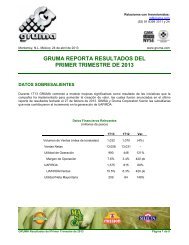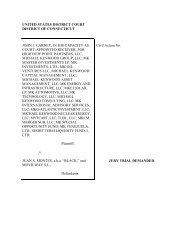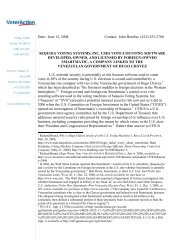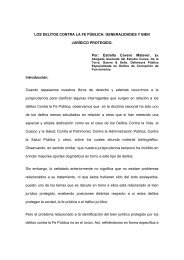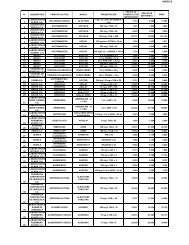broschuere ee zahlen en bf
broschuere ee zahlen en bf
broschuere ee zahlen en bf
Create successful ePaper yourself
Turn your PDF publications into a flip-book with our unique Google optimized e-Paper software.
annex: methodological notes<br />
104 R<strong>en</strong>ewable Energy Sources in Figures<br />
The saving in fossil primary <strong>en</strong>ergy in the transport sector is due to replacem<strong>en</strong>t of diesel<br />
fuel by biodiesel and vegetable oil, and of petrol by bioethanol. The size of the primary <strong>en</strong>ergy<br />
saving due to biofuels is determined not only by the agricultural production and origin<br />
of the biofuels, but also, in particular, by the allocation method used to split the <strong>en</strong>ergy consumption<br />
among main products and by-products. The datasets allocated on the basis of the<br />
<strong>en</strong>ergy value of the products are tak<strong>en</strong> from the GEMIS database of the Öko-Institut (fossil<br />
motor fuels) and from the IFEU short report [5] (biofuels).<br />
7. Economic impetus resulting from the use of r<strong>en</strong>ewable <strong>en</strong>ergies<br />
The rapid expansion of r<strong>en</strong>ewables s<strong>ee</strong>n in Germany in rec<strong>en</strong>t years has resulted in a massive<br />
increase in the importance of the r<strong>en</strong>ewable <strong>en</strong>ergy sector for the economy as a whole. This<br />
is due in particular – in the form of investm<strong>en</strong>ts – to the construction of installations. And<br />
as the number of installations increases, the operation of these installations is becoming a<br />
growing economic factor. The economic thrust resulting from the operation of installations<br />
includes not only exp<strong>en</strong>diture on operation and maint<strong>en</strong>ance of the installations, especially<br />
in the form of personnel exp<strong>en</strong>ses and ancillary <strong>en</strong>ergy costs, but also the provision of r<strong>en</strong>ewable<br />
heating fuels and biofuels.<br />
The cost of operating and maintaining installations is determined on the basis of technology-specific<br />
values. Cost calculations from various sci<strong>en</strong>tific studies are used for this purpose.<br />
These include the research projects related to the R<strong>en</strong>ewable Energy Sources Act (including<br />
research report on the R<strong>en</strong>ewable Energy Sources Act Progress Report 2007, interim reports<br />
on the monitoring of electricity g<strong>en</strong>eration from biomass, analytical report on possible adaptation<br />
of the EEG paym<strong>en</strong>t rate for photovoltaic installations), the evaluation of the market inc<strong>en</strong>tives<br />
programme and the evaluations of KfW assistance in the field of r<strong>en</strong>ewable <strong>en</strong>ergy<br />
sources. Detailed refer<strong>en</strong>ces to the sources used are provided in the main text.<br />
In determining sales resulting from the supply of fuel, the costs of solid and liquid heating<br />
fuels and of the substrates used to produce biogas are tak<strong>en</strong> into account. The relevant solid<br />
biomass fuels include in particular waste wood, residual wood from forestry and industry,<br />
wood pellets, wood chips, wood briquettes, and commercially traded firewood. Liquid fuels<br />
for stationary use include palm oil, rapes<strong>ee</strong>d oil and other vegetable oils; the main compon<strong>en</strong>t<br />
of the relevant substrates for biogas production is maize silage and grass silage. Total<br />
sales resulting from the supply of biog<strong>en</strong>ic fuels are assessed at nearly 2.0 billion EUR.<br />
In the fuel sector, sales are determined on the basis of wholesale and retail prices. Here it<br />
is necessary to take account of the differ<strong>en</strong>t types of fuel and distribution channels. For<br />
example, sales of biodiesel as an admixture to petroleum diesel are based on an assumed<br />
average net price of 73.53 ct/l, whereas the net figure for sales to commercial vehicles at<br />
own filling stations is 90.79 ct/l.<br />
The economic impetus factors described in the main text as arising from the operation of installations<br />
are not comparable with the previous years’ figures, because they are determined<br />
on the basis of a new system.








